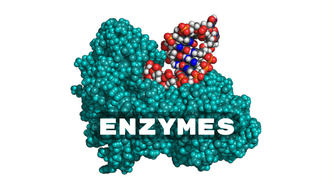 e An enzyme is defined as a protein substance produced by a living organism that acts as a catalyst to bring about a specific biochemical reaction. Enzymes help speed up a chemical reaction. Enzymes bind to molecules and alter them in very specific ways. Enzymes exist in every living and dead organisms on the planet. An enzymes purpose is to break down organic matter. Municipal drinking water and waste water treatment facilities have been using catalyst enzymes for treatment for years. The use of enzymes in pool and spa water treatment has come into it’s own in recent years. With the addition of enzymes in pool and spa water the enzymes move about freely through the water and collect the oils, lotions, make up, hair products, and other carbon base organic materials. Once the enzyme encounters that material it forms a substrate complex, upon completion of the reaction the enzyme is released and off to perform its reaction again. Here is What happens. The enzymes eat the carbon base organic waste, breaking down the carbon chain of molecules an destroying it to the point all that is left is the inert solids and Co2 gas bubbles which be off gassed out of the pool and the inert solids trapped in your pool filter. This will help reduce the sanitizer demand by consuming visible and non-visible organic matter in the pool and spa water as well as increase filter cleaning intervals. eThe catalytic abilities of enzymes are affected by many different conditions. Temperature, pH changes, water activity, ionic strength and other variables all influence the ability of a protein to function as an enzyme. For instance, an enzyme that is very effective in one environment may be completely ineffective when introduced into an environment — like a swimming pool where high levels of oxidizers are present — that can alter the enzyme structure. This is why it is critically important to choose an enzyme that has been specifically designed for use in pool and spa environments For large pools or pools with high bather loads, the addition of enzymes reduce the chlorine sanitization demand and demand to shock the pool while breaking down oils, make up, hair products, tanning oils, sunscreens and organics that deposit themselves on the filter media, skimmer box, waterline tile enzymes specifically seek out non-living organics found in water: 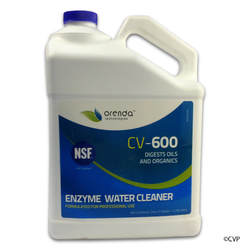 I highly recommend using Orenda Technologies CV-600 catalytic enzyme water cleaner. I’ve witnessed it’s power and effectiveness and I can say with certainty my own eyes have seen it work. Its NSF / ANSI certified made in the U.S.A and drinking water safe. For large pools or pools with high bather loads, the addition of enzymes reduce the chlorine sanitization demand, as well as the demand to shock the pool while breaking down oils, make up, hair products, tanning oils, sunscreens and other organics that deposit themselves on the filter media, skimmer box, waterline tile. Enzymes specifically seek out non-living organics found in water and remove them! Common Non-Living Organic Pollutants - Bird droppings - Human hair - Sunscreen - Cosmetics - Body oils - Wind-blown dust - Dead leaves - Pets or wild animals - Dead Insects - Grass or Mulch - Dead skin - Hair products -Urine – Feces - Saliva - Pollen - Air pollution Enzymes are not needed in every pool but can become a time and money saver on difficult to maintain pools and or pools with high bather loads. Enzymes remove the building blocks that contribute to bigger water chemistry problems by breaking down and consuming contaminants. Enzymes do not consume live bacteria but are specifically attracted to non-living organic pollutants and help make the job easier for sanitizing chemicals like chlorine to work. Enzymes thrive as outstanding clarifiers, stain removers, and foam preventers. Enzymes cannot eliminate living algae but they will breakdown dead algae after an algae treatment. For pool owners or pool service professionals, determining when the right time to use an enzyme is usually easy. Pools and spas that experience heavy bather loads, large amount of organic contamination, or have bathers who routinely enter the pool or spa before showering are your prime targets to use enzymes.  To learn more about orenda technologies cv-600 & cv-700 enzymes visit the orenda website http://orendatech.com 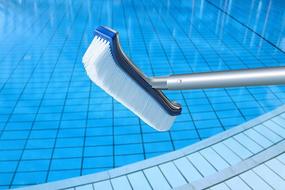 Brush, brush, brush, you can never brush your pool enough, if you skimp on anything don’t let it be brushing your pool. It’s the single most important part of your pool maintenance. 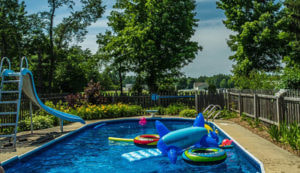 Don’t leave your pool full of play toys and small things that could get sucked into your automatic pool vacuum or into the skimmer box and block water flow reducing your pools filtration and circulation. Its best and safest to remove floating pool items when you are done swimming and store them away in a secure location.  If you have a water test kit, use it, test your water at least once a week so you can see how pool water chemistry fluctuates and changes day to day or week to week. Get a better understanding of what effects it has on your water balance and water quality Check your pool water level at least once a week, twice in summer. If its low add water. If there is bad weather and a lot of leaves and debris blow into the pool, try to remove as much as you can, with your pole and net, and empty the skimmer basket if its full. Heavy organic loads will consume your pools available chlorine at a high rate as the chlorine tries to oxidize the matter, in most cases waiting until your pool service comes that week will be too late and your pools health will suffer a devastating blow. If you see something, say something, don’t be afraid to call text or email your pool service if you think something looks odd, water dripping, cloudy turbid water, green water, algae on the steps or wall, a piece of equipment that doesn’t turn on, don’t wait until your service day to tell your pool service about it. Most of these could be the beginning of a bigger problem, It's best to catch it while it’s still a small problem. Your pool service will thank you so will your wallet. 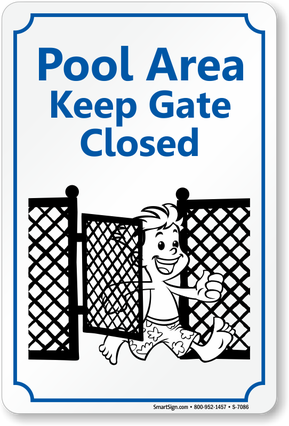 If you have a gate or fence around your pool or to your back yard, keep it closed at all times. Your gates should be self-closing, self-latching to prevent pool accidents. Last but not least, make it easy to get into your back yard. Leave an adequate path from the gate to the pool. Climbing over and around items with all of our heavy gear and service carts, hoses, poles, chemicals and equipment thru bushes around trash cans over obstacles to get to your pool, is not fun. It may not seem like a big deal to you , but for us it is. Thanks in advance and remember, Life is better by the pool. 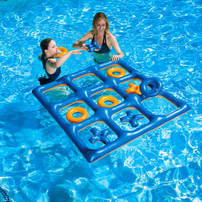 Water temps are in the mid 70’s, it’s almost Memorial Day which is the industries checkpoint for the beginning of the swim season. Are you ready? Is your swimming pool ready? Here are some tips to guide you and your swimming pool into tip-top condition to last you thru the summer swim season.  Walk around your pool, look for potential problems or hazards, Make sure all of the suction outlets on your pool and spa have a secured drain cover over them. Trim back trees and bushes. A clean back yard promotes a clean pool. Hose down the deck, away from the pool ! Use your skimmer / leaf rake / net and pole as well as your manual vacuum to remove any leaves, dirt and debris from the pool. Remember as it gets warmer your pool will see a higher level of evaporation than it did in the winter and spring, be prepared to add water more frequently if you don’t have an automatic water leveler. 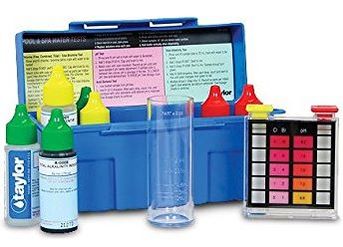 Check all of your pool equipment, turn on everything! Heater, lights, air blower, salt system, pumps, if you have a pool and spa combination exercise the valves to check for leaks, check all of the equipment for leaks and for equipment that’s not coming on or running properly, if something seems wrong turn it off and call a professional to come evaluate it and or repair it. Don’t wait until the day before you want to use it as it’s a very busy time of year for swimming pool professionals and you might have to wait several days before they can get to you to repair your heater, your lights or pump. If you have an automatic pool vacuum make sure its working properly, your local pool retail shop stocks parts for all major brands and if your vacuum needs a tune up, they will be glad to help you get it tuned up. Clean your filter and empty your skimmer and pump strainer baskets. If you are not comfortable taking apart your pool filter, call your local pool professional and have them do it, typical cost is under $100 for a thorough cleaning and change filter tank seals, it saves you the homeowner from getting dirty and wet. Balance your swimming pool water chemistry, use a quality test kit, I recommend the Taylor Technologies Troubleshooter test kit K-1004, Test strips although convenient are not very accurate and not recommended if you have them left over from last season. You can also take a water sample to your local pool retailer to check for hidden problems such as phosphates, cyanuric acid levels, alkalinity level and if you have a salt system check the salt level to make sure it’s in the 3000-3500 operational range. They will also give you recommended dosages of chemicals that are out of balance on your pool. 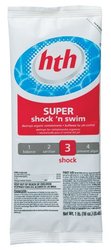 Shock your pool prior to swim season, preferably at night when the sun is setting because pool shock is a non- stabilized oxidizer and the suns UV rays will deplete it quickly in the middle of the day. Turn on your filtration system add the appropriate amount of shock ( typically calcium-hypochlorite), then brush your swimming pool and run your filter for 10-12 hours typically overnight. Last but not least adjusting your swimming pools filtration and circulation time. As the temperature outside rises your filtration time needs to rise also, those swimming pools that were running 4-6 hour filtration cycles in the winter and spring, will need 10-12 hours in the summers hot weather. As bather load increases chemical demand will also increase so be prepared by having the chemicals you need ready and waiting. Be sure to store them in a safe secure location well ventilated and away from children.
|
AuthorWrite something about yourself. No need to be fancy, just an overview. Archives
August 2018
Categories
All
|
